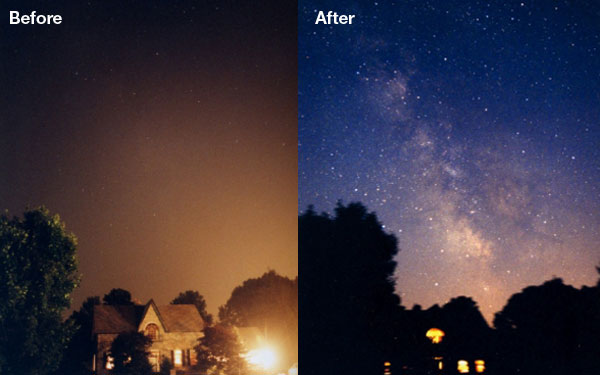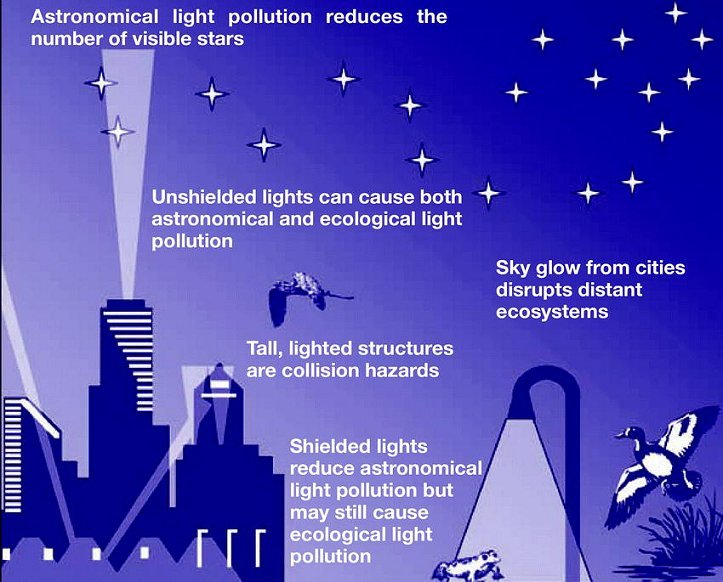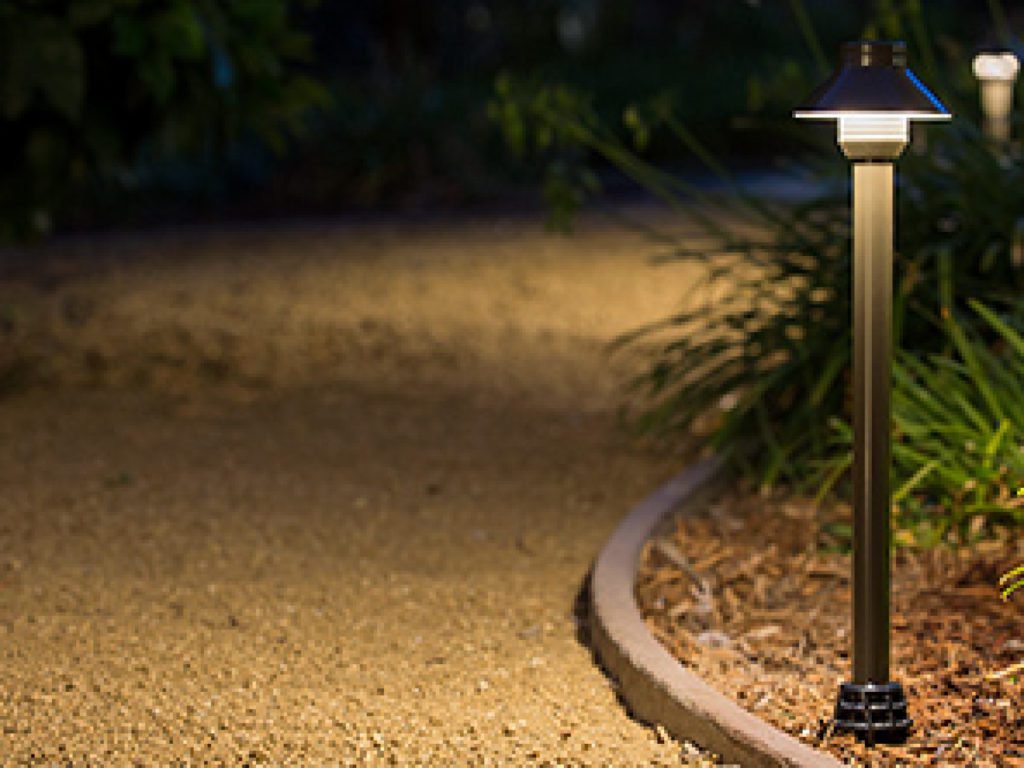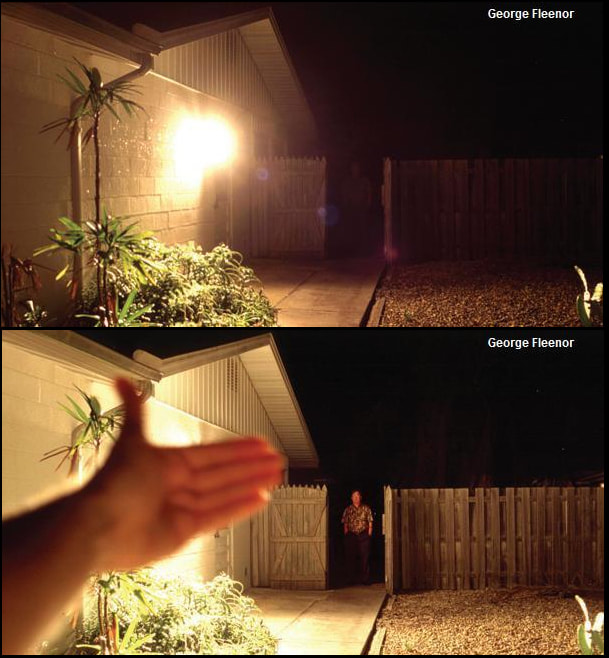What is Light Pollution?
Light pollution is excessive, misdirected, or obtrusive artificial (usually outdoor) light. Light pollution blocks our view of the night sky and stars, creates glare and safety hazards on roads, messes with our circadian sleep-wake rhythms, interrupts the patterns of nocturnal wildlife, and is by and large annoying. Light pollution also takes a financial toll: the federally funded National Optical Astronomy Observatory (NOAO) reports that poorly-aimed, unshielded outdoor lights waste $2 billion (17 billion kilowatt-hours) of energy in the U.S. each year.


Light Pollution and Nature
Did you know that songbirds migrate at night? They use the moon, the stars, and the setting sun to navigate. Light pollution robs these birds of the visual cues they depend upon for their navigation. Rather than following the moon, birds will circle the bright lights of, e.g., parking lot lights until they drop from exhaustion, or crash into brightly lit buildings, falling to the ground hurt, stunned and vulnerable to predators.
And, its not just songbirds. Much of the food we eat and the flowers we enjoy depends upon the work of night-time pollinators like moths, beetles, bats, and some species of bee. Take away the dark night sky and those pollinators don’t pollinate, the flowers and plants that depend upon them don’t germinate, the animals that depend on these for food don’t have food to eat, predators have no prey, and we all starve.
Artificial light has a purpose, but excess light and light pollution can kill.
Safety, Security, and Lighting
Do you light for safety or do you light for security?
Safety – protection from risk of injury – and security – protection from danger – are different goals that are best met in different ways.
Lighting for safe pedestrian passage – along walkways, at entrances and exits, in parking lots – is best met with non-glare, eye-friendly lighting that guides people along safe paths. Gentle light attracts your eyes to the safe path; glaring light, or light that casts shadows, repels your eyes, increasing the risk of missteps that can lead to injury.
Security – protection from danger, and protection of property – is best met pro-actively. Locks, alarms, and neighborhood watch organizations, protect you and your property from danger: lighting doesn’t. Locks, alarms, and neighborhood watch also protect you and your property from danger during the day, when most crime takes place.
Criminals need light, too! Unless an area is under constant surveillance, lighting at night is an invitation and not a deterrent.
Whether your concern is safety or security, keep in mind that danger hides in glare and shadows and places your eyes avoid. The lessons from law enforcement and security professionals are clear:
- Light only areas that will be observed
- Light only when areas are being observed
- Always use eye-friendly lighting that doesn’t cast shadows or result in glare where danger may hide!
Whether for safety or security, lighting should only be active when needed!


Take Action!
Think globally, act locally. Start with your home:
- Are you lighting more than needs lighting? Use shielded lighting pointed so that it illuminates only where needed. If you can see the light bulb from a distance it’s bad lighting! With a good lighting properly shielded you’ll see the illuminated ground, not the bulb. Unshielded lights, or lights that shine up and not down, pollute the sky. They also waste light: astronauts on the Space Station don’t need to see your home!
- Are you lighting more than is necessary for safety? Light only the safe path and keep the lighting level low to avoid glare and shadows, and preserve your night vision. Over-lighting, or overly-bright lighting, creates glare and shadows that hide hazards.
- Are you lighting only when necessary? Switch off your outdoor lights when not in actual use. Use motion sensors so that lights are on only when they are necessary for someone to see by. Lighting areas that are vacant, deserted, or not under observation is an invitation to vandalism or burglary.
- Is your lighting eye-friendly? Lighting should make things more visible, not less. Lighting that creates shadows or glare is creating places you can’t see into! Lighting that causes you to squint or avert your eyes – whether from glare or brightness – defeats the lighting’s purpose.
- About that “decorative lighting”: who’s going to see it? If it’s important to you, turn it on when you are going to enjoy it, but leave it off when you are not there to look at it!
